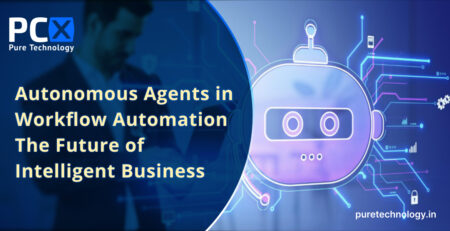How DevOps Automation is Shaping the Future of Software Development
Software development today is more complex and faster-paced than ever. To keep up, organizations are embracing DevOps automation as a way to streamline workflows, minimize human error, and accelerate product delivery. Traditional methods often lead to delays, inefficiencies, and increased security risks that slow down innovation.
With automated pipelines, businesses can achieve faster releases, enhanced security, and optimized resource allocation, giving them a strong competitive edge. According to the DORA (DevOps Research and Assessment) report, high-performing development teams that adopt automation achieve 25–55% faster deployment lead times compared to traditional approaches.
This evolution is not just about speed—it’s about staying relevant in an innovation-driven world. In this article, we’ll explore how automated testing, bug detection, vulnerability scanning, cloud automation, and AI-driven DevOps strategies are reshaping modern software engineering and IT operations.
1. Accelerating Development and Improving Efficiency
1.1 Automating Repetitive Tasks for Faster Delivery
One of the biggest advantages of automation in DevOps is its ability to remove repetitive manual tasks. With automated pipelines, companies can:
- ✅ Reduce manual intervention in code deployments.
- ✅ Integrate automated testing directly into CI/CD workflows.
- ✅ Ensure consistency across development, staging, and production environments.
Example: A SaaS provider implemented automated provisioning for cloud resources, cutting infrastructure management efforts by 40% while improving deployment speed.
1.2 Enhancing Collaboration Between Development and Operations
Traditional software development often suffers from silos. DevOps automation bridges the gap by:
- ✅ Enabling Continuous Integration and Continuous Deployment (CI/CD).
- ✅ Optimizing resources to prevent downtime.
- ✅ Detecting bugs early to reduce costly post-release fixes.
Example: An e-commerce company facing delays reduced deployment times from weeks to days by integrating automated pipelines.
2. Strengthening Security with DevSecOps
2.1 Embedding Security into the Pipeline
Security can no longer be an afterthought. With DevSecOps, automation ensures proactive security by:
- ✅ Running real-time vulnerability scans before deployment.
- ✅ Automating compliance checks in CI/CD pipelines.
- ✅ Reducing human error by enforcing policies automatically.
Example: A fintech startup integrated automated vulnerability scanning into its DevOps pipeline, preventing flaws from reaching production and ensuring compliance.
2.2 Continuous Monitoring for Risk Reduction
Modern businesses require security without slowing down delivery. Automated security enables:
- ✅ AI-driven code analysis for early flaw detection.
- ✅ Automated provisioning of security policies.
- ✅ Real-time performance monitoring against cyber threats.
Example: A healthcare company used automation to enforce strict data security protocols, protecting patient confidentiality while improving delivery speed.
3. Cost Reduction and Smarter Resource Utilization
3.1 Lowering Costs Through Early Issue Detection
Fixing bugs late in development is expensive. DevOps automation reduces costs by:
- ✅ Identifying defects early with automated testing.
- ✅ Using AI-driven insights for efficient code reviews.
- ✅ Minimizing human error in deployments.
Example: A logistics firm cut post-release defect costs by 60% using automated testing.
3.2 Optimizing Cloud Infrastructure Costs
Cloud development requires dynamic scaling. Automation helps by:
- ✅ Using automated provisioning for applications.
- ✅ Scaling server capacity based on live traffic.
- ✅ Reducing costs by allocating only necessary resources.
Example: An online streaming platform scaled server capacity during peak events, preventing outages and lowering cloud costs.
4. Scaling Software Development Seamlessly
4.1 Automating Infrastructure Management
Growing applications need scalable infrastructure. DevOps automation makes it easier through:
- ✅ Infrastructure as Code (IaC) for faster deployments.
- ✅ Automated performance monitoring.
- ✅ Consistency across multiple environments.
Example: A financial services firm automated infrastructure scaling, cutting manual intervention and boosting deployment speed.
4.2 Load Balancing with Automation
Traffic spikes can break systems. Automation ensures scalability with:
- ✅ Automated provisioning of resources on demand.
- ✅ Intelligent load balancing for server optimization.
- ✅ Real-time detection of performance bottlenecks.
Example: A ride-hailing app used automated load balancing to maintain seamless service during peak usage hours.
5. The Future: AI and Machine Learning in DevOps
5.1 AI-Driven DevOps for Smarter Development
AI is redefining DevOps automation by enabling predictive and adaptive systems. Future trends include:
- ✅ AI-powered bug detection and resolution.
- ✅ ML models for smarter automated testing.
- ✅ Predictive code analysis to prevent inefficiencies.
Example: A cybersecurity company integrated AI vulnerability scanning, cutting response time to security threats by half.
5.2 Rise of Self-Healing Systems
AI-powered IT operations are leading to self-healing infrastructures that:
- ✅ Detect and fix issues without human intervention.
- ✅ Adjust infrastructure needs automatically.
- ✅ Continuously optimize performance at scale.
Example: A SaaS company implemented self-healing automation, reducing downtime by 70% and improving service reliability.
Why DevOps Automation is the Future of Software Development
In the digital-first world, manual processes can’t keep up with the demand for faster releases, stronger security, and scalable infrastructure. DevOps automation is no longer optional—it’s essential.
Key Benefits Driving the Future of DevOps Automation:
- 🚀 Faster Time-to-Market – Automated pipelines and testing accelerate feature delivery.
- 🔐 Enhanced Security – DevSecOps ensures vulnerabilities are caught early.
- 💰 Cost Optimization – Automated provisioning reduces infrastructure waste.
- 📈 Scalability – Cloud automation enables businesses to scale effortlessly.
- 🤖 AI-Powered DevOps – Self-healing systems and predictive insights shape the future.
Final Thought:
Businesses that embrace DevOps automation will stay ahead in innovation, reliability, and customer satisfaction. Those that don’t risk falling behind in the competitive race of modern software development.
Call us for a professional consultation












Leave a Reply